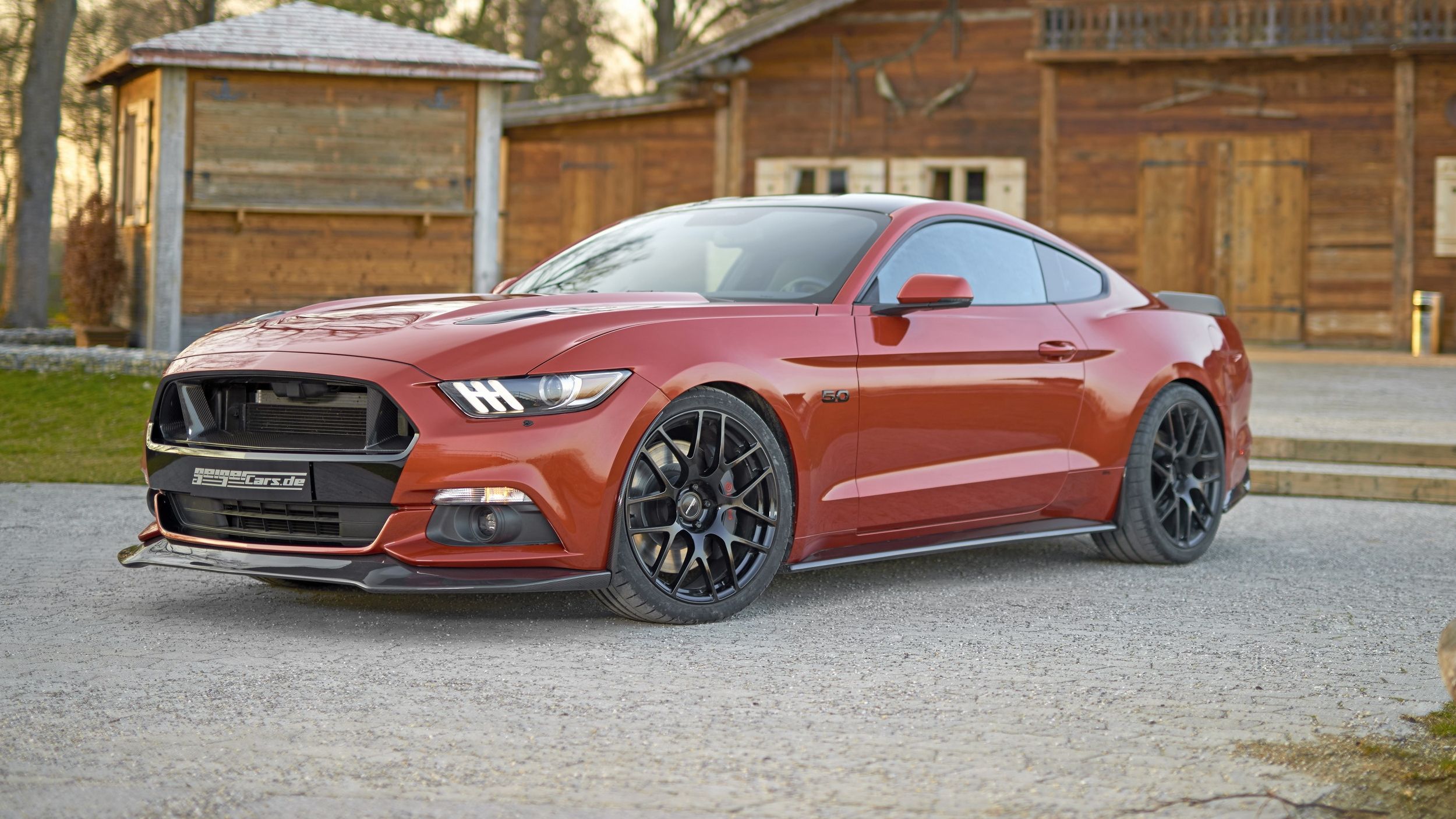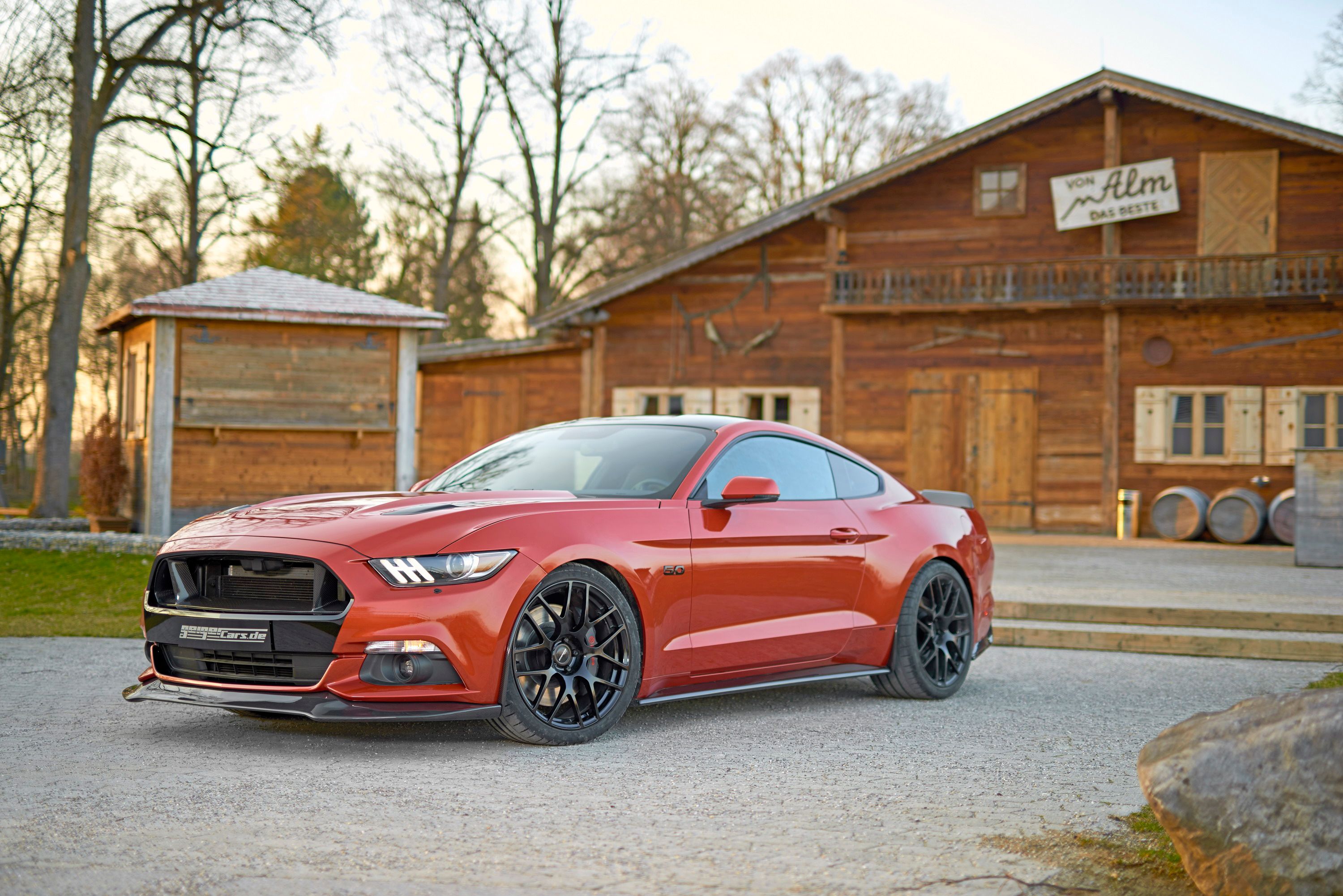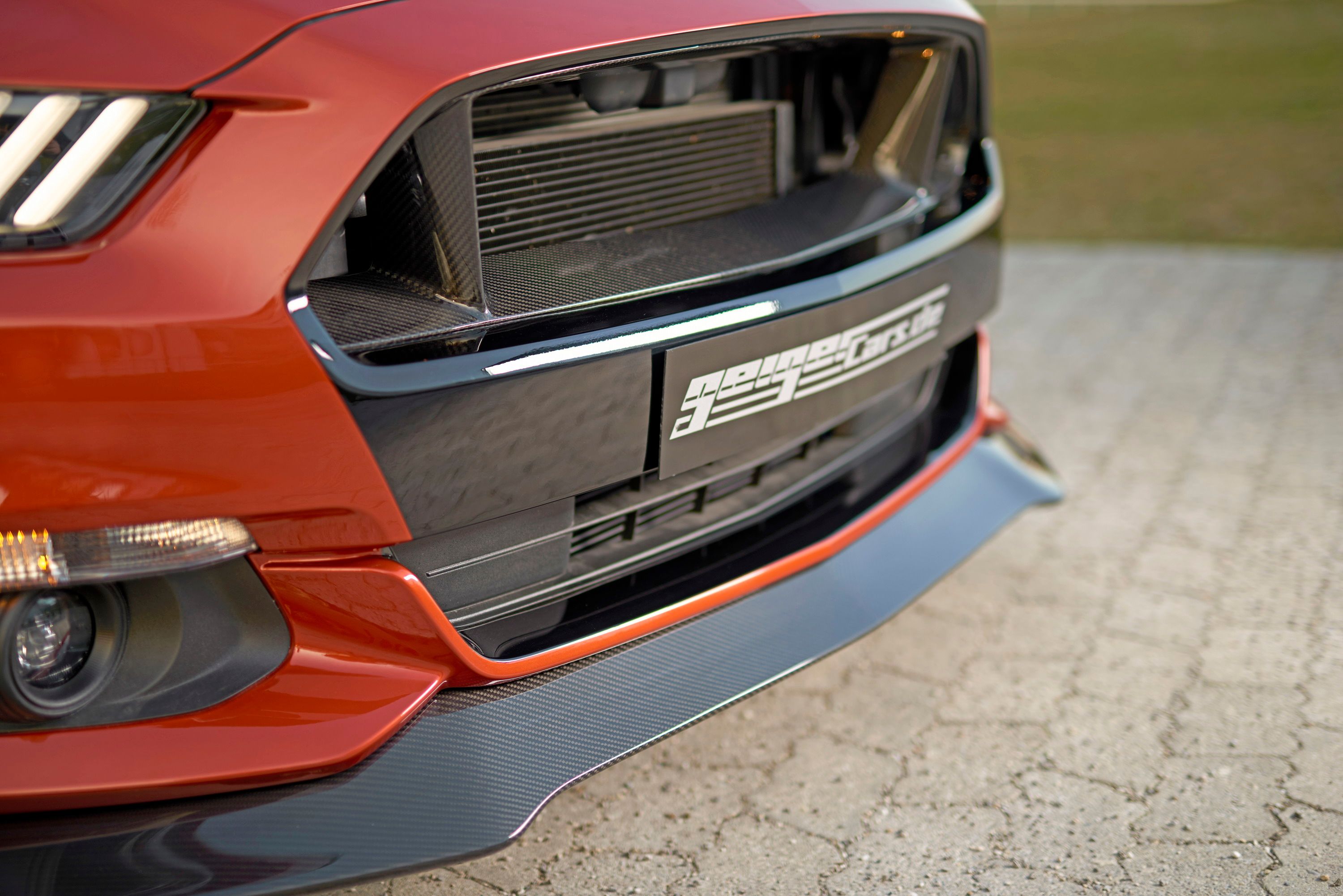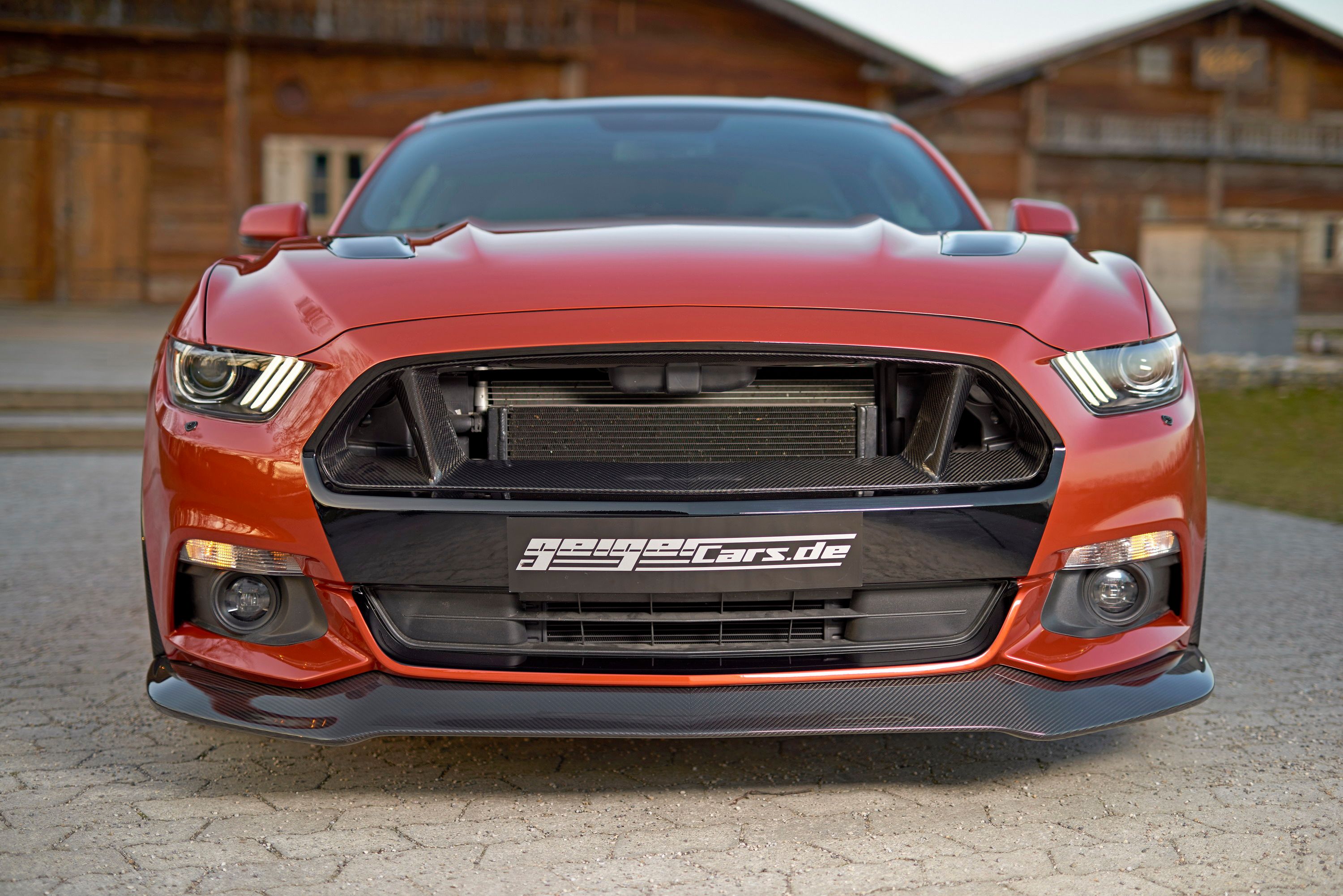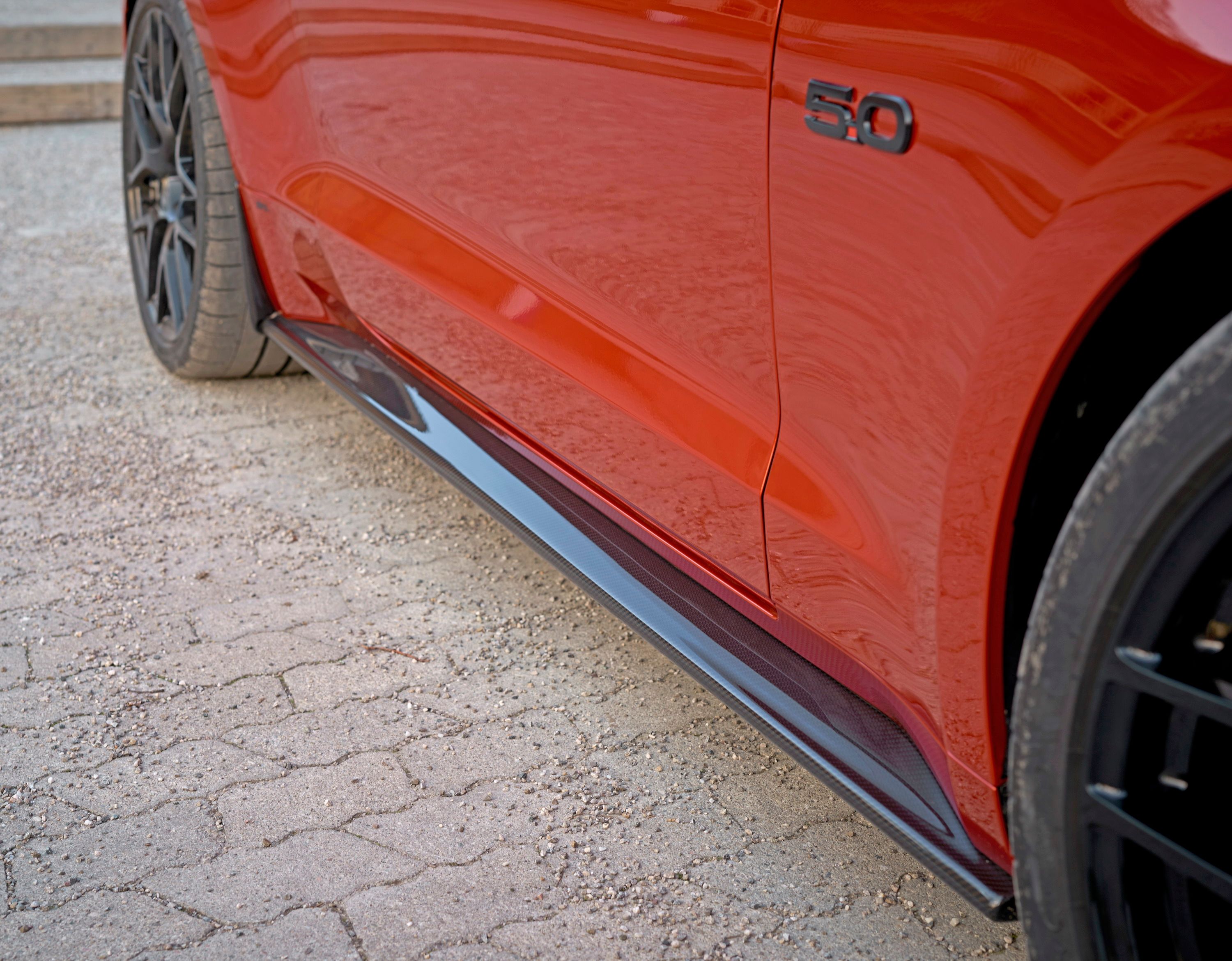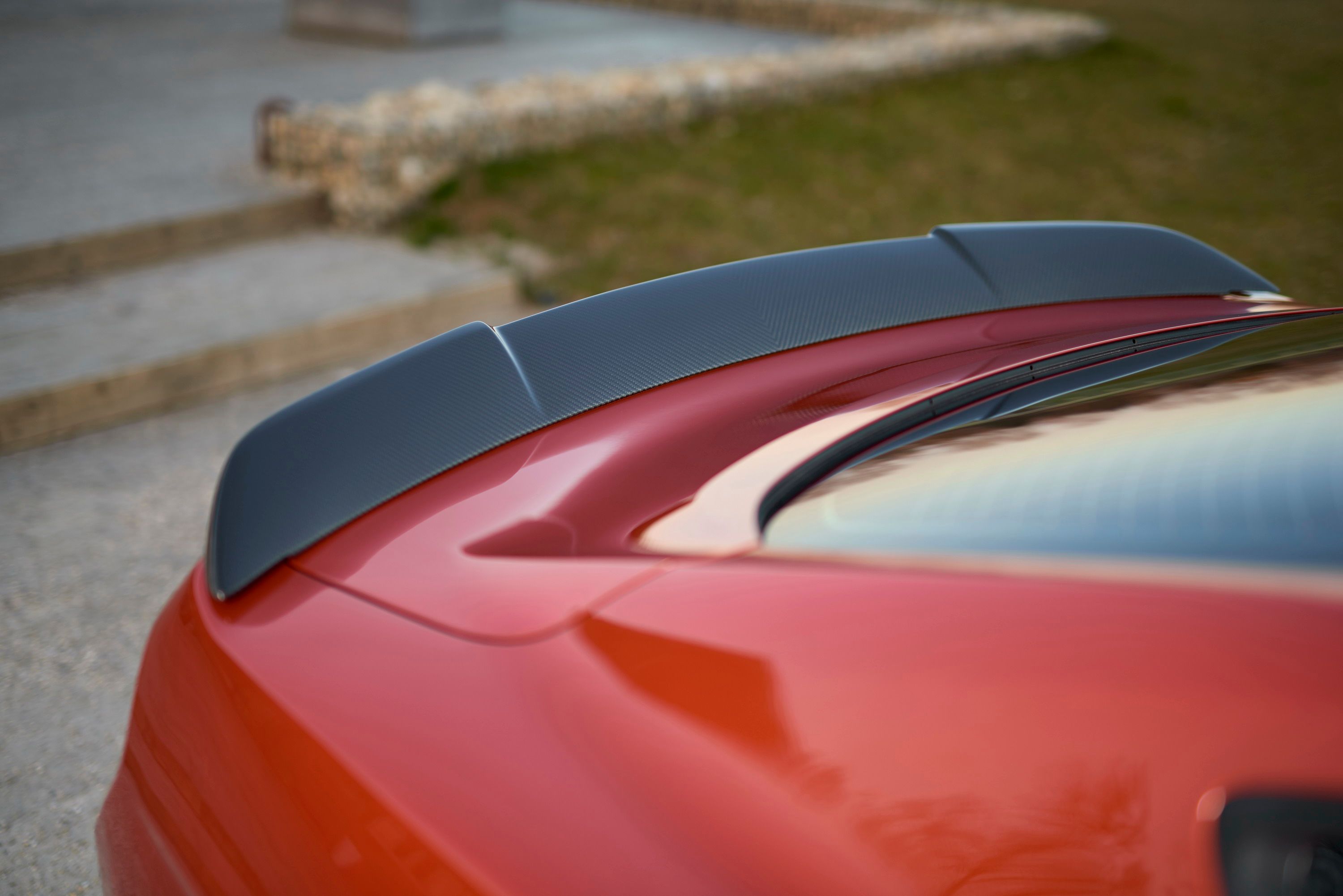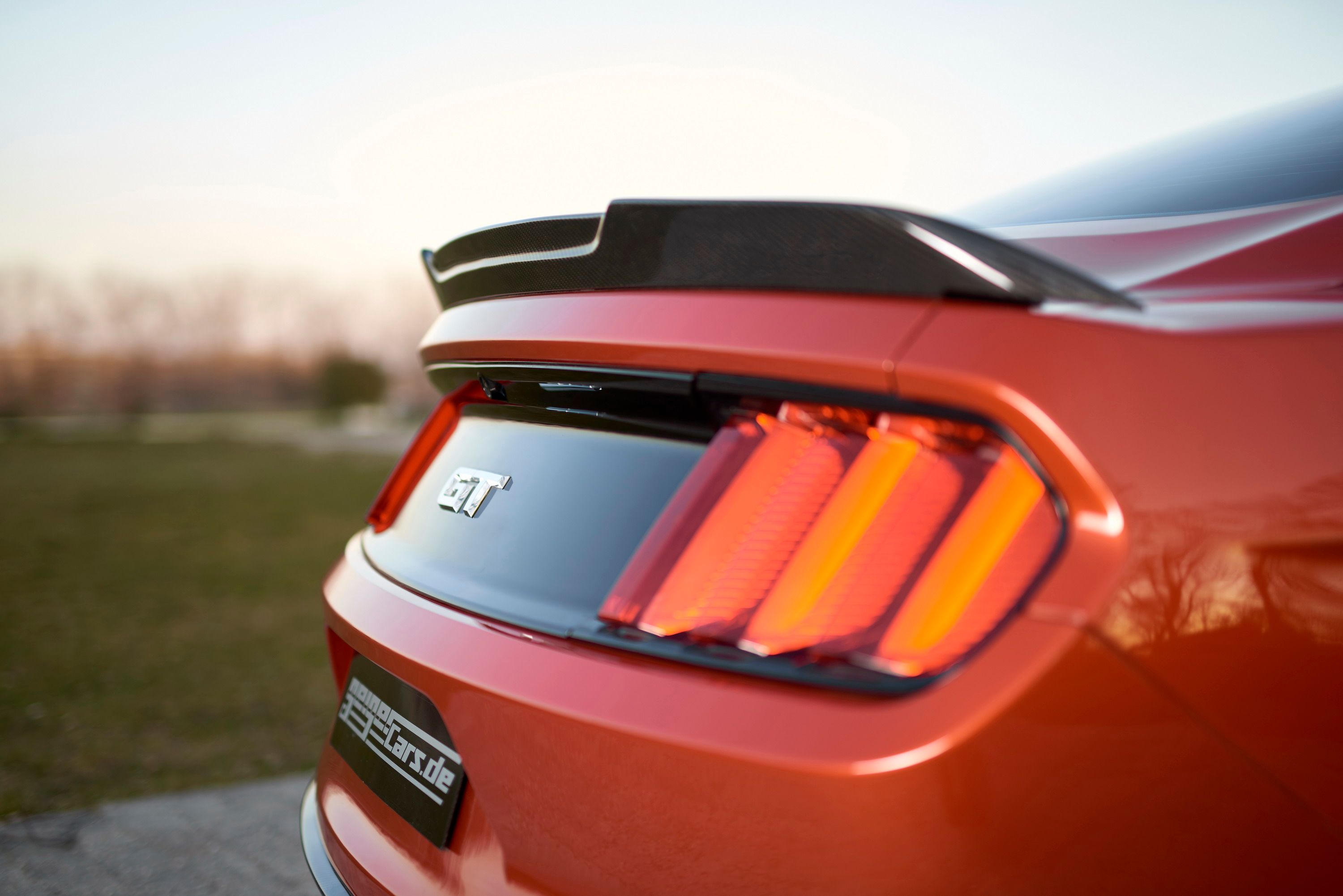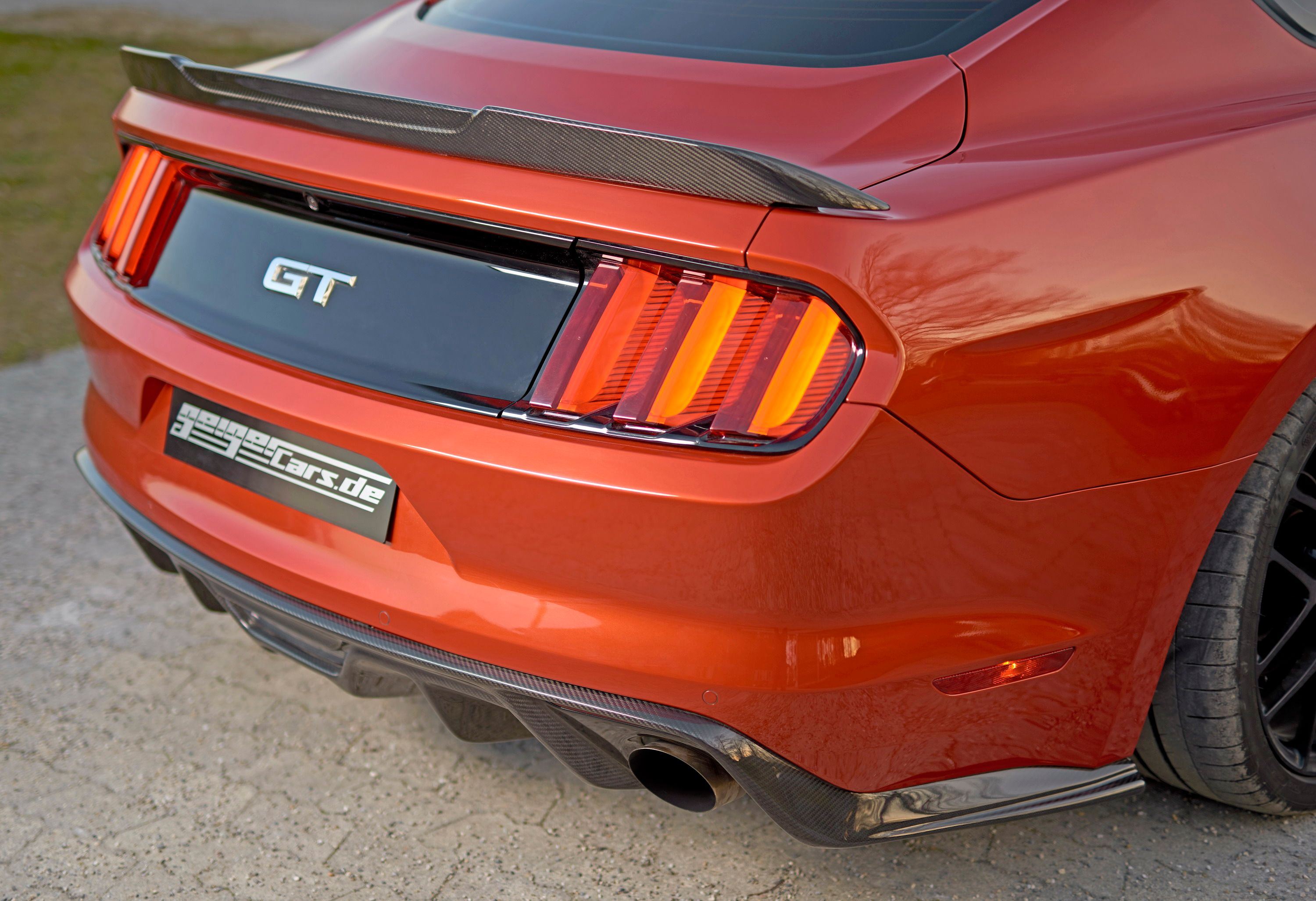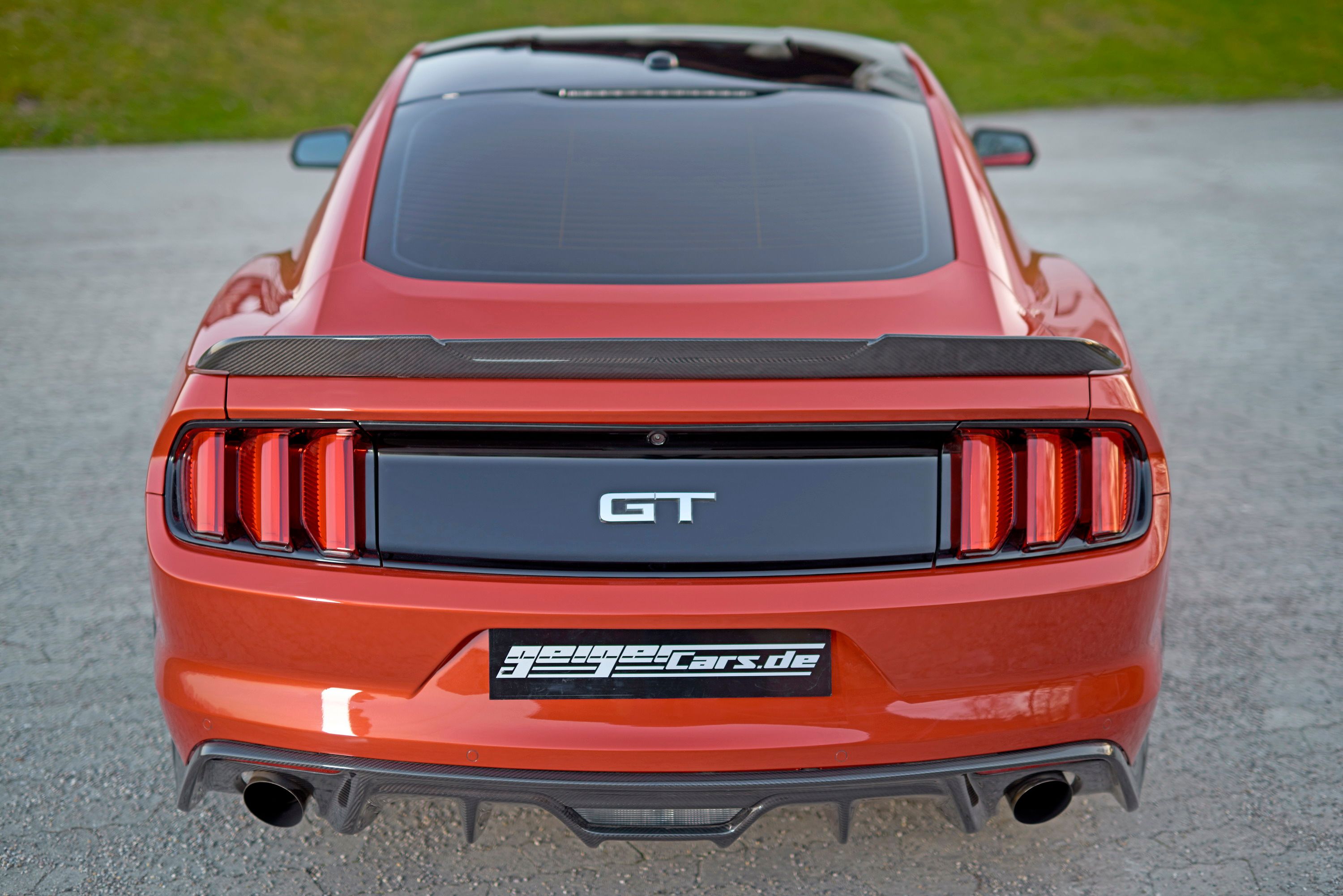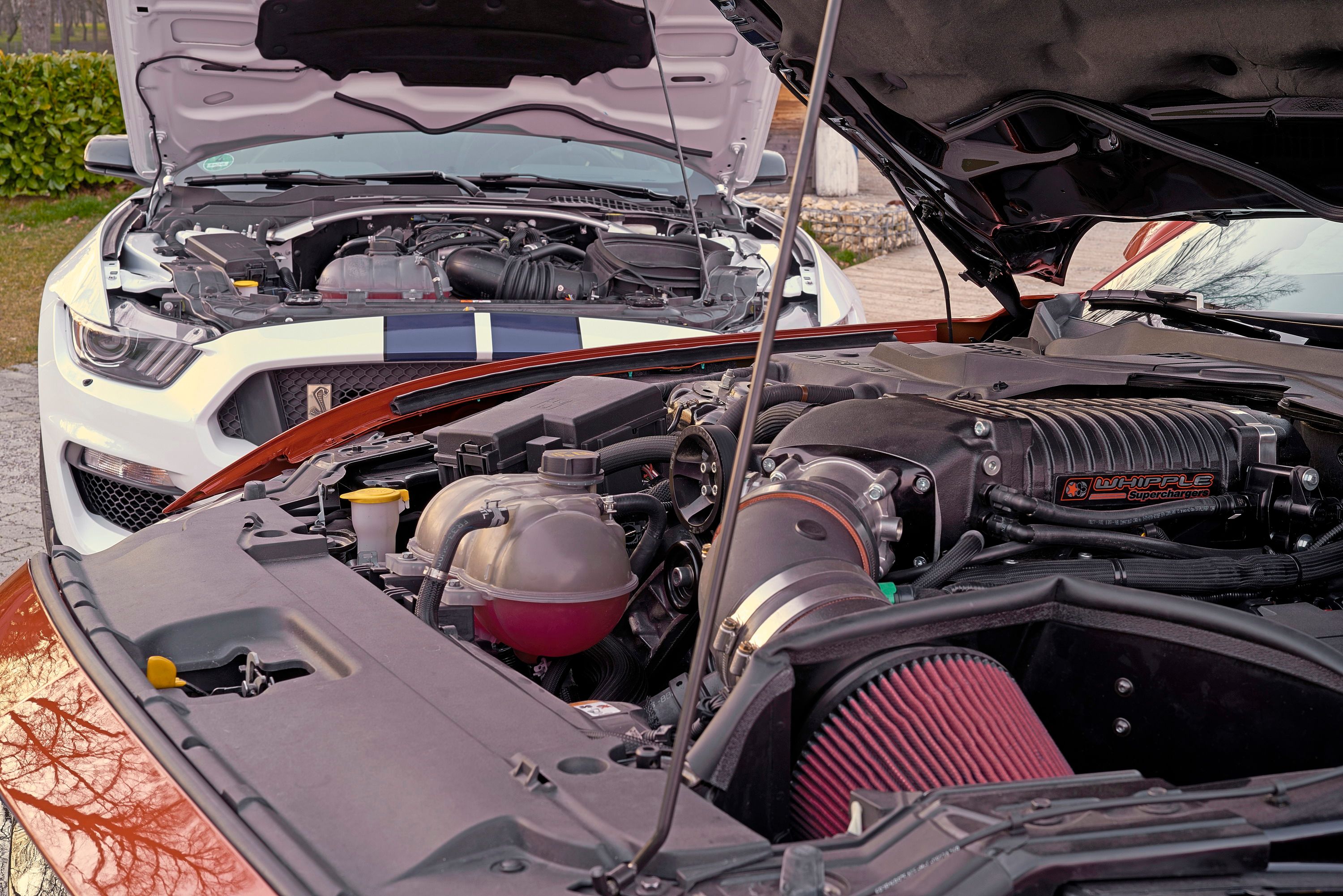Performance programs for cars like the Ford Mustang and the Chevrolet Camaro are nothing new. You can even make a case that these two muscle cars are the two most modified vehicles in the business. German tuner Geiger Cars doesn’t see it differently as it has created a pretty successful business by merely focusing a lot of its attention on building kits for both the two iconic American ponies.
The tuner’s latest program is for the Mustang->ke428 and to nobody’s surprise, Geiger Cars->ke1300 built a kit that fits right into the ethos of the Mustang. Dubbed the “820,” the kit is comprised of aero upgrades on the exterior designed to make the ‘Stang look more menacing. On top of that, it also boasts performance and handling improvements, things that the Mustang needs when accounting for the massive engine upgrade Geiger Cars gave to the muscle car’->ke507s 5.0-liter V-8 engine.
Suffice to say, this is the archetype of what a tuning program for the Mustang should be like. It’s priced at a handful of pretty pennies, which you can argue is the only thing of consequence with the kit. But I imagine those willing to fork over the money won’t have any issues with the costs once they realize how much power they'll have to play with. It’s a win-win scenario for both customer and tuner, something I reckon Geiger Cars will be more than happy to accommodate.
Continue after the jump to read the full review.
2016 Ford Mustang GT 820 By Geiger Cars
- Make: Array
- Model: 2016 Ford Mustang GT 820 By Geiger Cars
- Engine/Motor: V8
- Horsepower: 820
- Torque: 560
- [do not use] Vehicle Model: Array
Exterior
Geiger Cars’ exterior work on the Ford Mustang is largely made up of a carbon fiber body kit that adds visual and performance enhancements on the muscle car. Up front, you’ll notice the presence of a front splitter and a dramatically different grille. Actually, the whole stock Ford grille was taken out and replaced with a carbon fiber version comprised of two small flat pillars on the edges, thus leaving the entire middle portion of the grille completely open. It’s a unique design that’s unlike anything we’ve seen on any Mustang program.
Moving on from the front leads us to the sides of the muscle car where side skirts have been put in place. Over at the back, there’s a trunk-mounted spoiler and a rear diffuser, both of which are also made from carbon fiber and placed there to increase the downforce on the rear axle of the ’Stang. Rounding out the exterior upgrades is a new set of black-painted, Y-spoke, 20-inch lightweight forged alloy wheels wrapped in high-grade Michelin rubbers.
Interior
There aren’t any interior upgrades to speak of so customers must be content with the standard cabin configuration within the Mustang. The good news is that Ford is offering a host of packages that should spruce up the interior. The California Special Package is particularly interesting because of its use ebony leather, Miko suede seat inserts with red contrast stitching, and bespoke aluminum.
Drivetrain
The real highlight of Geiger Car’s new tuning kit for the Ford Mustang is the engine modification. After all, there’s a reason why the grille was left open. The most notable addition is the 2.9-liter supercharger, which, by nature of its sheer size, already gives us a hint of the kind of power upgrade the Mustang’s 5.0-liter V-8 engine will get. But the supercharger isn’t the only significant upgrade included in the kit. Geiger Cars also added a new crankshaft, forged pistons, steel connecting rods, a cold air intake system, and a stainless steel sports exhaust system. All these upgrades add up to give the Mustang GT a road-wrecking 820 horsepower and 560 pound-feet of torque, a ridiculous improvement form the Mustang’s standard output of 435 horses and 400 pound-feet of twist.
The tuner didn’t release the performance numbers that its engine program is capable of giving to the Mustang, but considering that the standard model can cover 0 to 60 mph in 4.5 seconds, this 820-horsepower monster could very well do it just a tick over three seconds, making it close to 1.5 seconds quicker than the standard model. There’s also no mention of top speed, but again, this kind of power traditionally gives way to a top speed in excess of 200 mph, at least when the speed limiter is taken out.
Suspension
It certainly goes without saying that an engine upgrade like this also needs some tweaks on the suspension side to balance out the whole kit. Geiger Cars acknowledged as much when it installed a sports-tuned suspension system on the Mustang while also tapping into Ford’s very own GT Performance Package to get access to Brembo’s six-pot caliper big brake system, the Torsen limited-slip differential, and a 3.73:1 final drive ratio.
Pricing
The whole thing costs €109,450, which is about $125,000 based on current exchange rates. That price comes with the donor car. A more specific breakdown of the upgrades themselves reveal the body kit costs €8,900 ($10,133) while a custom paint job on the ‘Stang costs €5,900 ($6,717).
From there, the price skyrockets to €34,900 ($39,740) for the engine conversion before tapering off to items like the stainless steel sports exhaust (€3,900/$4,440), the new set of wheels (€4,300/$4,900), and the sports suspension kit (€1,900/$2,163).
Do a little addition and the kit alone (minus the Mustang) will set you back roughly €60,000, which is a little over $68,000 based on current exchange rates.
Competition
Chevrolet Camaro
Hennessey is well and truly considered as one of the foremost authorities in building aftermarket programs for American muscle cars. That’s a reputation the American tuner has earned with tuning kits like the one it presented for the 2016 Chevrolet Camaro back in November 2015. True to form, Hennessey’s program mainly focused on the Camaro’s 6.2-liter V-8 engine. Take that into account when you wipe the disappointment in your faces when you realize that the exterior and interior upgrades were limited to the usual Hennessey badging and minor creature comforts.
The real work can be found under the hood of the Camaro with Hennessey offering a variety of engine upgrades for the Chevy pony car. The most significant additions are the 2.3-liter supercharger system that’s slightly smaller than the system Geiger Cars is offering. Hennessy also has a custom ECU calibration, and, in the case of the HPE650 program, high-flow cylinder heads, and a specially designed camshaft. Total output can reach either 600 horsepower or 650 horsepower, but Hennessey’s offer for the Camaro can go up to as high as 1,000 horses with the HPE1000 kit.
Read our full review on the Chevrolet Camaro here.
Dodge Charger Hellcat by Hennessey
Since we’re already talking about Hennessey, it wouldn’t seem right if I just ended with the tuner’s program for the Camaro. That’s because it also has a separate kit for the last member of the muscle car trinity: the Dodge Charger Hellcat. Like the Camaro kit, the program for the Charger only received badges on the exterior and embroidered head rests and a serial numbered plaque on the interior. Other than these very minor details, the Charger Hellcat remains in standard configuration.
As you might expect, Hennessey’s expertise in engine modification was on full display on the Charger Hellcat. Work on the muscle car’s 6.2-liter V-8 engine included the addition of a new ECU unit and the installation of a high-flow air filter, a port-matched throttle body, upgraded tuning software and lower pulley. All these modifications play important roles in bringing the Charger Hellcat’s output to an impressive 805 horsepower, putting it right in line with the power upgrade Geiger Cars gave to the Mustang. No performance numbers were announced, but a 0-to-60 mph time of under three seconds and a top speed of 204 mph are in the cards.
Read our full review here.
Conclusion
Geiger Cars’s reputation as one of Europe’s best tuners of American cars remains safely intact with this kit. The engine upgrade is hefty enough to give the Mustang supercar-like performance and the carbon fiber aero kit provides cosmetic and performance benefits to the car. It’s disappointing that there are no interior enhancements given how much the entire program costs. But in the grand scheme of things, it’s a small price to pay if it means giving the Mustang that much extra power under its hood.

